Saint-Brieuc offshore wind farm
Saint-Brieuc: Iberdrola's first large-scale offshore wind power project in Brittany
Iberdrola projects Offshore wind France
This offshore wind farm, commissioned in 2024, has a total installed capacity of 496 megawatts (MW), capable of generating enough clean energy for 835,000 people.
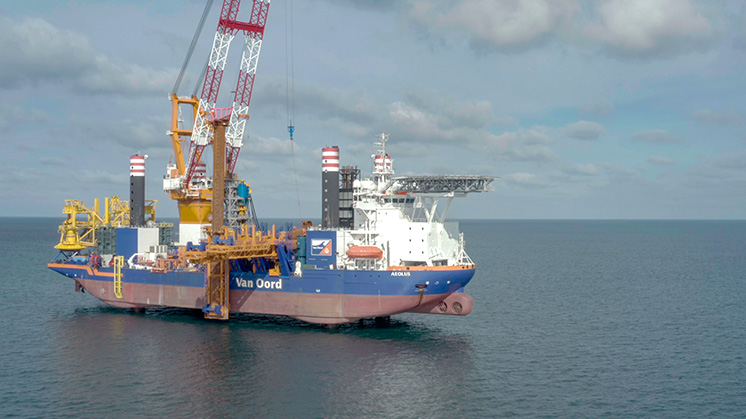
Saint-Brieuc Offshore wind farm




The Brittany region is a land of strong winds and high tides, characteristics that have always determined the landscape, economy and life of the area. In May 2024, the company commissioned the Saint-Brieuc offshore wind farm, the second large-scale offshore wind project in France and the first in Brittany, a region in the far west of the country, with the aim of harnessing its full energy potential.
With an investment of 2.4 billion euros, financed entirely by Iberdrola, it has a production capacity of 1,820 gigawatt hours (GWh) per year, which will supply energy to 835,000 people, equivalent to 9% of the total electricity consumption in Brittany.
This is possible thanks to a total installed capacity of 496 megawatts (MW) from 62 turbines each generating 8 MW of power, which cover a surface area of 75 km2 located some 16 km off the French coast.
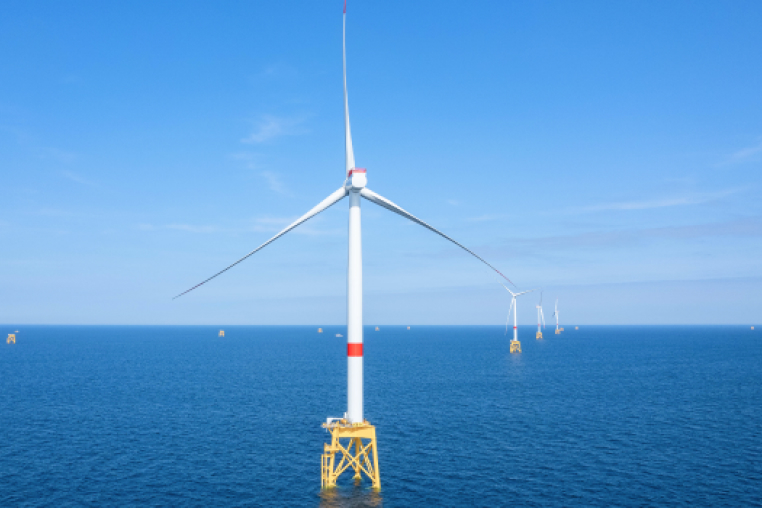
The Saint-Brieuc wind farm, an example of Iberdrola's leadership in the offshore wind sector.
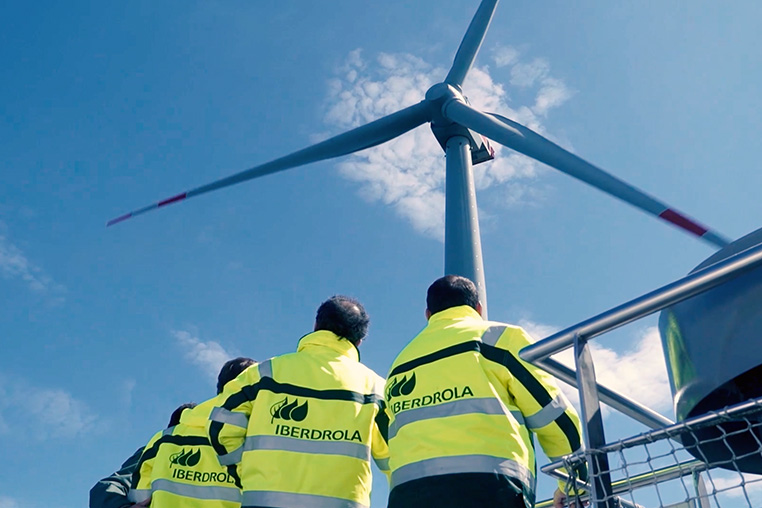
The key facts about Saint-Brieuc, Iberdrola's first offshore wind farm in Brittany.
With the start of operation of all its wind turbines and the connection to the French electricity grid, Saint-Brieuc became the company's fourth installation of this type, after West of Duddon Sands External link, opens in new window. in the Irish Sea; Wikinger, in the Baltic Sea; and East Anglia ONE, one of the biggest offshore wind farms in the world, located in the south of the North Sea.
External link, opens in new window. in the Irish Sea; Wikinger, in the Baltic Sea; and East Anglia ONE, one of the biggest offshore wind farms in the world, located in the south of the North Sea.
Location of the project
Saint-Brieuc Offshore wind farm
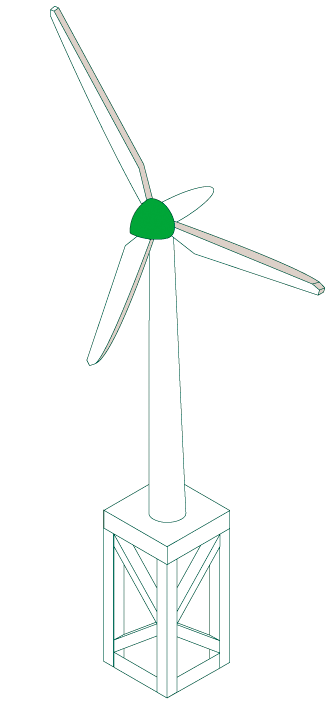
- 62 Siemens Gamesa turbines
- 8 MW each
- 209 meters high each
- 7 rows arranged according to ocean currents and perpendicular to the direction of the prevailing winds
- 75 km² in size
496 MW total capacity
-
1,000 m between each turbine
-
1,400 m between each row so ships can pass through the area (fishing)
 SEE INFOGRAPHIC: Saint-Brieuc offshore wind farm location [PDF]
SEE INFOGRAPHIC: Saint-Brieuc offshore wind farm location [PDF]
Evolution of the work
In 2020, the analysis of the technical and environmental conditions was completed, thanks to the installation of three wind measuring systems, in the area where the farm is situated, which spent two years recording the wind power potential of the area using the LIDAR system (Laser Imaging Detection And Ranging). This system uses laser technology to accurately determine the prevailing wind direction and identify the optimal orientation of the wind turbines in order to get the best possible energy performance.
The results of the environmental studies were also presented to the Management and Monitoring Committee, showing that the sound waves generated by drilling were compatible with the normal life cycle of the species of fish studied. As a result of these studies, the company decided to abandon the pile-driving technique in favour of the drilling method for installing the piles.
Work began in 2021 and lasted for three years. The first phase, carried out from 3 May to 31 October 2021, started in the northern part — so that fishing activities could continue in the southern part — where five specific areas were delimited and worked in shifts.
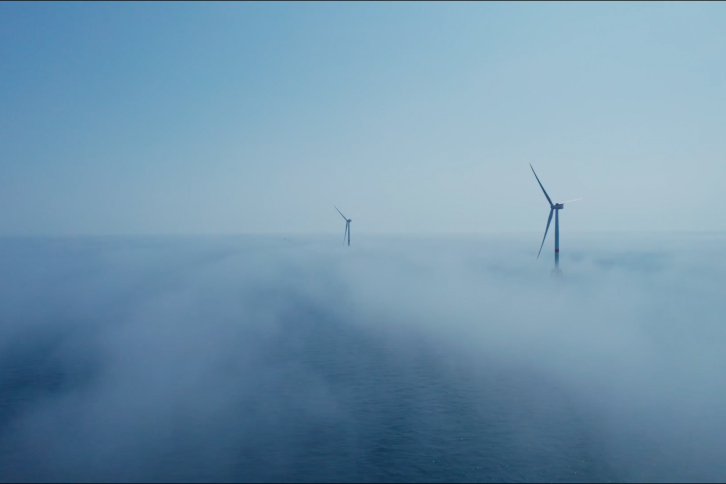
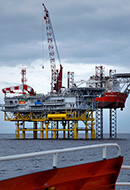
Construction of an offshore wind plant
Everything about offshore wind farm construction.
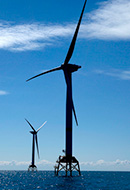
Evolution of wind energy in Europe
The European wind market has grown strongly over the last 25 years. Find out more.
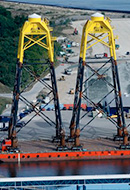
Offshore wind turbines foundations
How are offshore wind turbines anchored at sea?
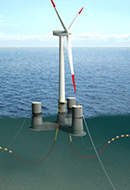
Floating offshore wind
A milestone to boost renewables through innovation.
On 1 November 2021, the end of the first phase of construction operations was completed with the ship AEOLUS ready to leave the area and arrive at its home port. In March 2022, construction work on the wind farm resumed in, and the AEOLUS ship itself was responsible for installing the piles and foundations for the wind turbines. It worked in the area without interruption during 2022 and 2023. The development and construction of the facility has mobilised more than 1,700 jobs in France, more than 500 of them in Brittany.
In early July 2023, we took a huge step in the commissioning of Saint-Brieuc with the connection of the first wind turbines to the French grid, producing clean energy through an offshore wind farm for the first time in Brittany's history. With this, the territory of Côtes-d'Armor (600,000 inhabitants) became a positive energy municipality, generating more electricity than it consumes.
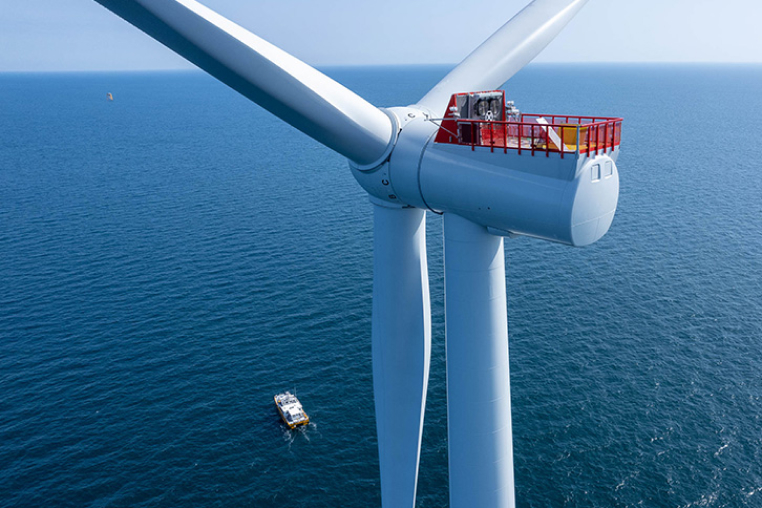
Saint-Brieuc's first wind turbines started producing electricity in 2023.
 Jackets
Jackets
Saint-Brieuc bears the seal of Spain, since the jackets — (the platforms that support the offshore turbines) and the piles have been built and assembled entirely by Navantia-Windar, in Fene (A Coruña), where a 1,600 tonne caterpillar crane was installed for the final assembly, and Avilés (Asturias), respectively.
At €350 m this was the biggest offshore wind contract in the history of the shipyard, supporting over 2,000 direct jobs and thousands of indirect ones.
The assembly work for the foundations began after the arrival of the structural tubes at the ports of Ferrol and Brest. The final assembly of all the component parts was carried out at the Galician shipyard facilities.
 Turbines
Turbines
The 209-metre-tall turbines were manufactured by Siemens Gamesa Renewable Energy (SGRE). They are equipped with the latest direct-drive technology and their blades, almost 82 metros long, offer an area 18 % bigger than the previous model improving the annual energy production by 20 % compared to their predecessors.
The assembly of the towers was carried out on the new polder at the Port of Brest and entailed the creation of new industrial capacity funded to the tune of 11.8 million euros. The construction of this new plant started at he beginning of 2022, and its commissioning was completed at the end of the same year.
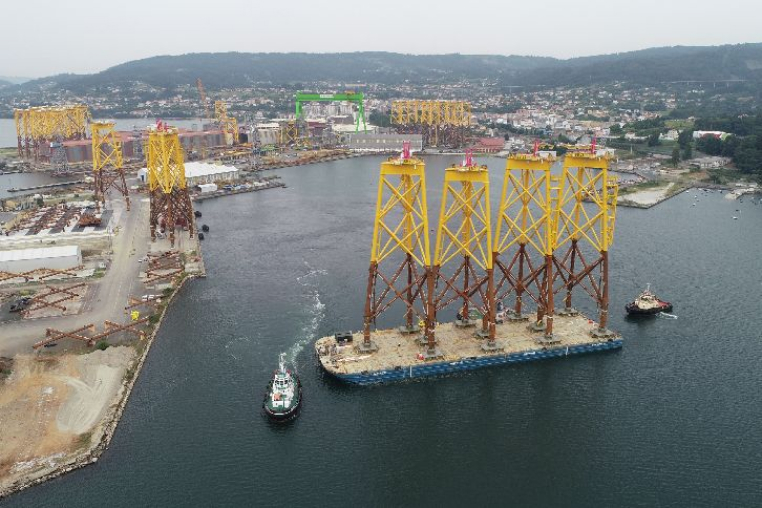
Iberdrola starts the transfer to France of the offshore wind platforms built by Navantia-Windar for the Saint-Brieuc wind farm.
 Marine substation
Marine substation
The offshore substation was successfully completed in July 2022, being manufactured in Belgium by a joint venture between Smulder (a subsidiary of Eiffage Metal) and Equans, with former carrying out the engineering and construction of both the foundations and the platform that houses the transformers and other electrical gear, while the latter carried out their assembly and commissioning.
The structure supporting this substation comprises a foundation (jacket) 63 metres high and weighing 1,630 tonnes, and a platform 55 m long, 31 m wide and 23 m high, weighing approximately 3,400 tonnes. Over the course of 2022, the piles, cables and the electrical substation were installed. Offshore construction work was carried out during 2023 to integrate all the elements.
Iberdrola awarded GE Renewable Energy Grid Solutions the supply and installation of the major electrical equipment for the substation. The company was. responsible for the design, construction, installation and commissioning of the high-voltage electrical equipment, as well as the control and protection system for the substation. To do this, it designed and manufactured the 72.5 kV and 225 kV gas-insulated switchgear (GIS) at its factory in Aix-les-Bains (France).
 Transport and installation
Transport and installation
For its part, the Dutch maritime services company Van Oord was responsible for the transport and installation of the 62 jackets and the offshore substation. Van Oord started work on the open sea in 2021 with the installation of the anchor bolts, for which it deployed its high seas support boat, Aeolus, specifically designed for the construction of offshore wind farms, which was assisted by a second vessel from 2022.
 Cabling
Cabling
As for the undersea cabling connection systems, they were provided by Prysmian Group, world leaders in the business of power cabling systems and telecommunications with whom Iberdrola has already worked on Wikinger and Vineyard Wind, which installed and commissioned 90 km of high-voltage 66 kV AC connection cables and three hubs with XLPE insulation.
Following tests carried out in summer 2020, the undergrounding of all cables between the wind turbines was confirmed, which is a giant step forward for navigational safety and for the continuation of fishing activity within the park. Delivery and commissioning were completed in December 2023.
 Communication and coordination
Communication and coordination
A consortium led by Atos - in partnership with SeaRenergy, a leader in engineering, marine solutions, QHSE and personnel services for the offshore wind industry - was responsible for implementing critical communication solutions and ensuring maritime coordination activities.
Specifically, a maritime coordination centre was set up in the coastal city of Pleudaniel (France) to coordinate, monitor and document all the movements in and around the construction area, 24 hours a day, seven days a week during the construction phase. They also established a unified critical communications platform that enables the helicopters, ships and operational teams working on the offshore wind farm to communicate with each other and with the coordination centre, within and around the park.
Both systems were retained after the construction phase and will support the wind farm throughout the operational phase.
In addition, in order to inform inhabitants, in particularly sea users, an online information service dedicated to the works was opened and compensation measures were put in place for fishermen whose activity could be affected during the construction phase.
Iberdrola, world leader in renewable energies
At Iberdrola, we committed to renewable energy more than two decades ago as a fundamental pillar on which to build our safe, clean and competitive business model. Thanks to this vision, we are currently world leaders in renewables, reaching 45,263 MW of clean energy in operation at the end of the first nine months of 2025.
This commitment is reflected in the €21 billion that our Strategic Plan 2025-2028 allocates to Renewables and Customers, with 38% dedicated to offshore wind, 24% to onshore wind, 10% to solar photovoltaic and another 10% to energy storage.






